How to Tell Which ABS Sensor is Bad?
To ensure safety, an Anti-lock Braking System (ABS) is installed in the wheels of vehicles, and it acts as an anti-skid braking system.
This system uses an ABS sensor, which is also known as a wheel sensor, to keep track of the wheel’s speed and send it to the ABS computer.
Your ABS computer, by using the information sent by the ABS sensor, prevents the brakes from locking in case of an emergency stop.
This sensor can worsen due to some reasons, and you should know about the indications to get noticed if it gets bad. In this article, I will be comprehensively mentioning which of your ABS sensors is bad.
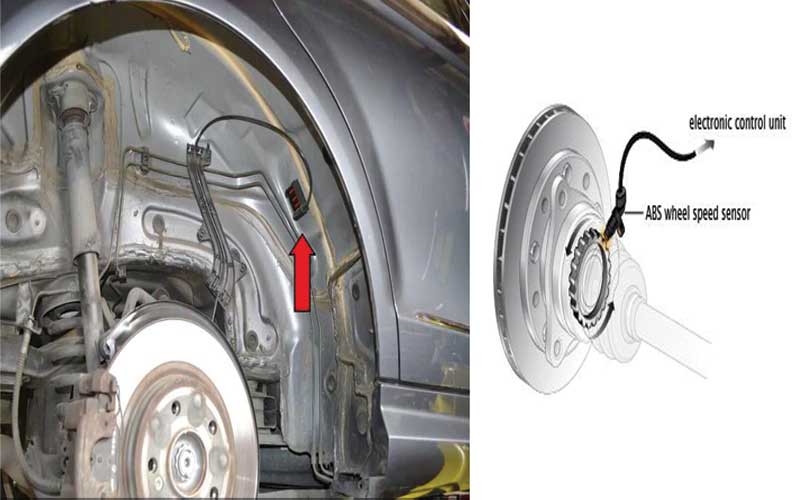
ABS Sensor
ABS sensor working
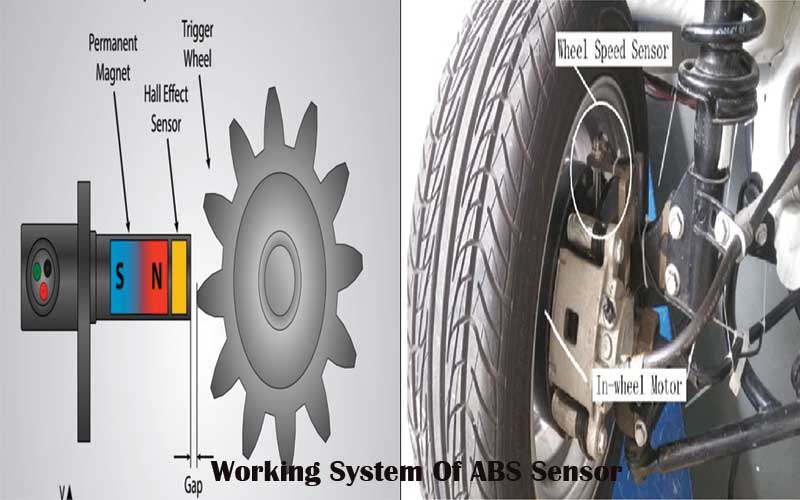
ABS sensor working explained.
Before getting into detail, let’s recall how an ABS sensor works! An ABS sensor/ wheel speed sensor mainly consists of two parts, which are ring and magnet.
An ABS sensor is commonly attached to the drive wheel hub and monitors your vehicle’s various functions. These functions include traction control, vehicle’s speed, and the anti-lock braking system.
The mounting ring, when it makes contact with the magnet, generates a voltage signal, which then gets transmitted to the ABS computer. In this way, the braking system is controlled to avoid uncertain happenings.
Symptoms of a bad ABS sensor
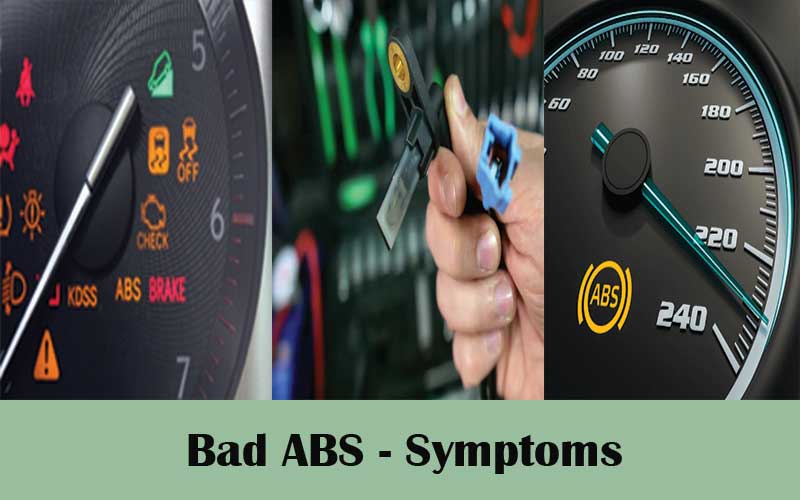
Faulty abs sensor symptoms
Before jumping to the main procedure, it is important for you to know the symptoms of bad ABS sensors. So, let’s have a look at them first for a comprehensive approach towards our purpose.
ABS light illumination
I mentioned that the anti-lock braking system is monitored by the ABS sensor. So, when there occurs any problem with the sensor like it’s worn out, has a poor connection, or has got dirty, the ABS light will indicate.
By getting that indication light, it’s important that you should look for the sensor and take appropriate measures timely.
ABS becomes faulty
ABS provides an anti-lock facility by safely dealing with sudden stops and speed monitoring. But if your ABS sensor gets bad, it will directly affect the Anti-lock Braking System (ABS).
On applying brakes, if it seems that your front tire has locked up, then there is an immediate need for an inspection. You can also stop using your vehicle until you find the remedy.
Indication through traction control light
When this light illuminates, it is mostly due to a faulty ABS sensor. This happens because this sensor also monitors the wheel speed and sends the data to the traction control system. Hence, if the monitoring goes wrong, the light will glow up.
Procedure for carrying out testing
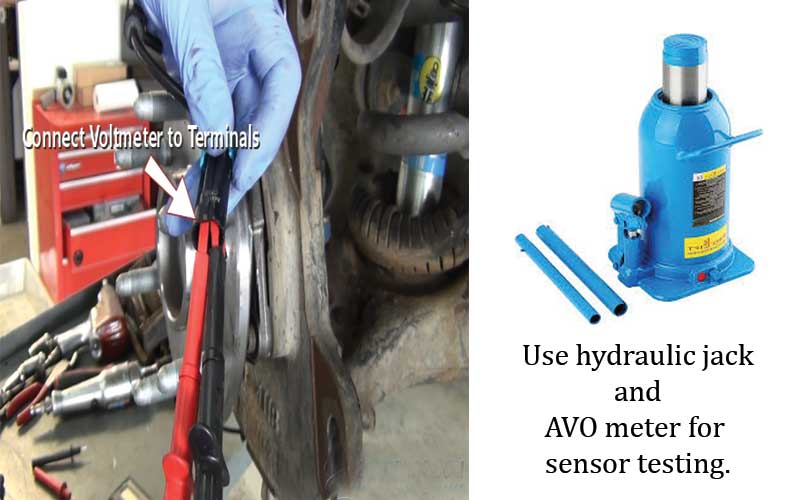
Ways of testing sensors
It is not much tedious to test your ABS sensor, and you can do it on your own. The important apparatus that you will need for this testing process includes a voltmeter and a hydraulic jack.
Locate your ABS sensor and disconnect its wires carefully. Make sure that you do not damage other electrical equipment. Now, connect the wires of the voltmeter to the ABS sensor.
Make sure that the connection is made in the right manner. After successfully connecting the wires, set the voltmeter to Alternating Current (AC) mode.
The first reading after a solid connection that should come on the display should be zero. If it is zero, you are good to go.
Now let’s start testing! The only way to check if the ABS sensor is working is to rotate the hub. Try doing it slowly. On spinning, there will be some reading generated and displayed on the voltmeter.
If your ABS sensor is perfectly fine, you will see a reading of 400. Keep in mind that this reading also depends on how fast you move the hub.
If this sensor has given a correct reading, then it is time to move on to the next one.
If any of the readings is not normal, then look for the ring part of the ABS sensor, which is like a toothed gear. Inspect it to see if damaged.
Also, remember that there is a magnet involved in the sensor. Look carefully for any unwanted metal in front of the magnet of your ABS sensor.
The above method will surely be helpful if you follow it rightly. Also, make sure that you keep in mind all the safety precautions as well.
Alternate method
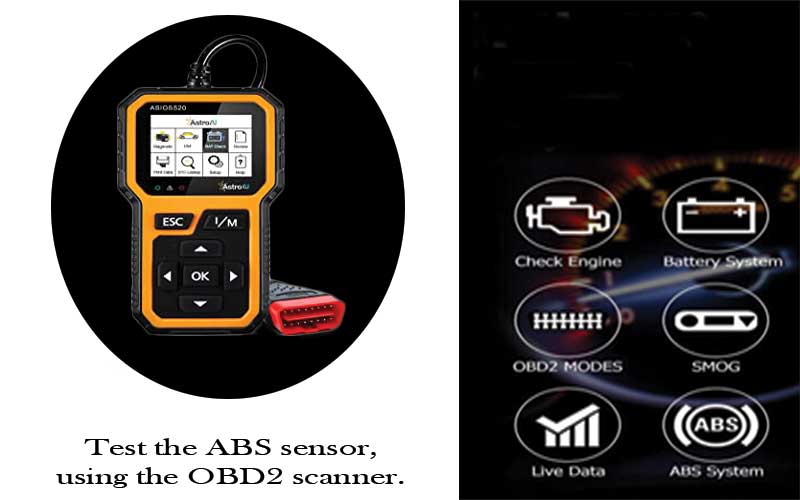
Alternate method of find to bad ABS sensor.
There is another method available as well, and this one includes an OBD2 scanner.
Your car computer is responsible for almost all the important indications when something goes bad. You can therefore use an OBD2 scanner for the purpose of knowing if the ABS sensor is working well or not.
You can also tell which ABS sensor is bad. So, first, make sure that there are ABS and traction control lights on your car front display.
Now connect the OBD2 scanner with the car, and after connecting, select the car model and details of your car.
There is also an option of auto-detecting that allows you to detect the details of the car automatically.
After detecting your vehicle, it is time to move to the control unit by taping on the control unit button on the screen of your OBD2 scanner.
The screen will display so many functions that are being performed and monitored by the car system.
You have to select ABS on the list. After selecting, you can go for two options, one will be live data testing, and the other will be reading codes.
Live data testing is much more effective in the testing process.
In the live data portal, you will see a menu showing a lot of information about the stuff going on in your ABS system.
In the menu, you have to look for the wheel sensors, and corresponding to you will see a corresponding speed value for different wheel sensors.
If your car is at rest, these values should be zero. But if any of the wheel sensors show a different value, that means it is bad/faulty.
You can now move the car and see the values. If an abnormal value comes up for a sensor, it means that a specific sensor is bad.
If you follow the above steps in a correct manner, you will be able to efficiently perform the analysis and find out the bad ABS sensor.
Note: Read the following article about Tire Pressure Sensor Fault Meaning & Fixing.
Things to keep in mind while testing
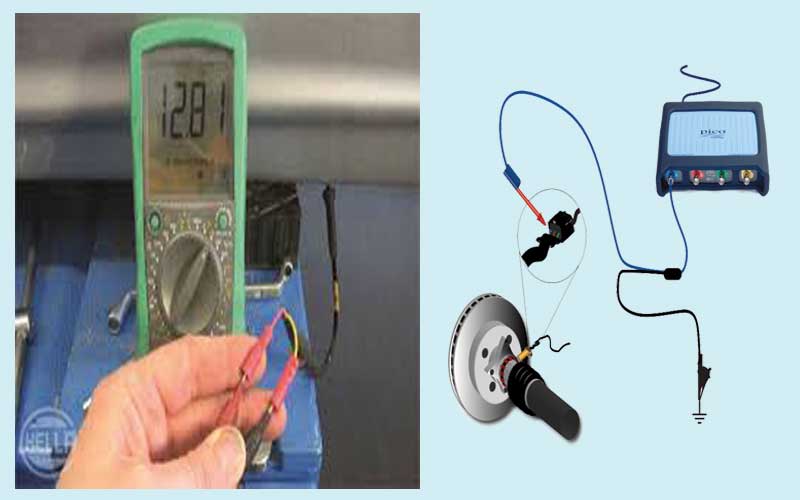
Sensor Testing
If you are manually testing for the bad ABS sensor, then it is recommended that you should jack the whole car. In this way, you can test all four wheels one by one without lowering down or lifting up every side separately.
On testing, if you do not find any indication, then it means all are good. But still, on lowering down your car, you see ABS light; there might be something wrong with the wiring.
To address that issue, you need to have a wiring map/diagram and a voltmeter. Set the voltmeter on ohms. Now using a voltmeter, inspect the wiring completely.
You have to connect those wires with the voltmeter and check the readings. If you find correct readings, then wiring should be okay. But if you don’t find reasonable values, you would have to replace the faulty wires.
When this testing phase gets completed, and you make the appropriate replacements, the ABS light will go off.
While working with wires, make sure that you do not disturb the other wirings for different purposes. If you don’t go carefully, you will end up having more issues than before.
Suggestions
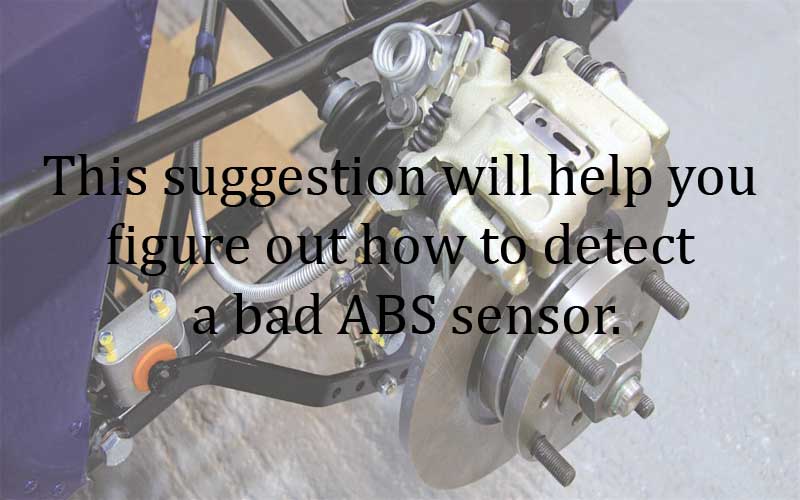
Sensor analysis suggestion
I would suggest that in this modern era of technology, try to use more accurate ways for your works.
Manually testing each wheel sensor seems like a lot of grinds. It will involve physical effort as well, and there will be a chance of disturbing other equipment as well if you are not experienced.
To know which ABS sensor is faulty, a scanner might be more useful as it will allow you to check your car functions by just connecting to the car.
You do not have to open the wheels and perform the analysis manually. You will check by the scanner and, after that, replace the faulty one. No hit and trial methods anymore!!
Read about the details of Symptoms of A Bad or Failing Coolant Temperature Sensor here.
Final Thoughts
Now you know about the working of an ABS sensor, the symptoms when it gets bad, the procedure to tell which one is bad, and the expert’s recommendations.
It is time to follow the way that suits you in all aspects and perform the testing accordingly. Make sure that you do not delay this procedure as a bad ABS sensor will lead to damaging your whole ABS system.
If your ABS system gets damaged, it will make you vulnerable to wheel locking and the resulting accidents. Also, it will cost you a lot of money as well to replace the ABS system.
Always keep in mind that care is better than a cure. Early diagnosis will save you from a greater loss. Hence, take care of your vehicle by doing proper maintenance regularly.
I think I have come up with the best possible information that you should know before doing this job. Now the rest is up to you.


article includes some basic procedures must misses important facts such as: your OBD diagnostic tool must be a fairly elaborate one to determine what specific wheel has the problem. a little naive in the whole approach. sounds like article was written in another language and translated to English.
Not written in another language Rick. Just missed the facts. I will add these sections soon. Thanks.